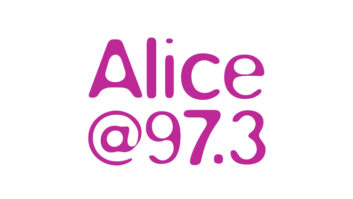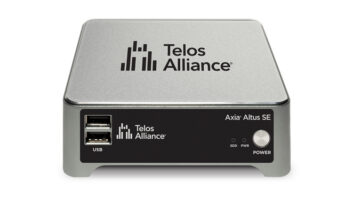As an IT manager in the radio industry, I�m regularly tasked with challenges that extend outside of the traditional world of information technology. These challenges span many areas of technology � from audio and video streaming, telecommunications, media delivery, studio DAW design, automation system integration, security � you name it, management views it as part of information technology. For those of us who enjoy challenges, this can be an exciting aspect of the job, as exposure to new ideas and technologies will likely come into play.
The NocTel web interface affords the user an easy means in keeping track of numbers announced to listeners; descriptions of said numbers; and finally, personnel to whom they are routed.
Click to Enlarge One of the smaller but interesting tasks I�ve repeatedly encountered over the years was finding the best way to capture listener feedback (�leave a message after the beep�) for after-the-fact on-air usage. It�s a detailed process, from capturing the best possible audio quality, to making that audio available to the editing staff automatically, to ensuring 100 percent availability and uptime.

Another consideration is the message volume; we need to ensure the caller volume won�t affect the day to day operation of the office telephone system. While there are dozens of ways of approaching this, the methods can be costly, tedious to manage, difficult to integrate � and still result in audio quality that will make you cringe.
I can honestly say that all the means we used to address this task (prior to the one we are using now) had major limitations. The product used when I arrived at the job was managed by folks in a separate department. It was an answering machine in a production studio that had the speaker rewired to an input on the board. While being a somewhat creative solution, the limitations were many.
Adding new numbers for listener feedback purposes is greatly simplified.
Click to Enlarge The second method was a step in the right direction, but actually resulted in lower quality audio due to the way it was captured. This method used a PC with a voice modem and specialty software built to capture audio across an analog phone line. The software was very functional and allowed multiple file formats as well as options for local or network storage which helped alleviate any sort of long term retention and storage space limitations. It also allowed for simple outgoing message management and even handled multiple lines on one computer.

Unfortunately, the audio quality captured by a voice modem didn�t have the same clarity as the answer machine method. Additionally, the software and computer would need regular monitoring to ensure they were operational and doing what you needed them to do.
Yet another method was the integration into the local office telephone system using a voicemail box. As expected, audio quality improved, and some of the problems associated with using a singular PC were eliminated. While a move in the right direction, this method had one very unfortunate downside: The call volume of some of the larger shows was too much for the system to handle, which resulted in a hard crash of the entire office phone system. After this happened twice in a short period of time, it was determined this solution was not worth the cost of affecting an entire facility�s ability to make and receive calls. We moved back to the PC-based solution.
Listeners have migrated to mobile phones almost entirely and have stopped calling from land lines. This minimized the effectiveness of the PC voice modem method to the point it was being phased out. Again, we needed a better solution.
VOIP
We began to dig into the world of VoIP to learn about more options. While meeting with potential partners and learning more about what technologies were available, the concept of hosted solutions came into the conversation.
Access to the recordings couldn�t be easier. One person can easily �filter� them for content prior to passing them on to the production department for further use.
Click to Enlarge While this isn�t what we�re using for the office system, the capabilities of a hosted solution sparked my interest as a potential replacement for our listener feedback lines. I then met with Cory Schruth of NocTel, who manages hosted solutions for businesses of all sizes. It seemed almost too good to be true; for every question I had, Cory supplied the right answer; and NocTel allowed us an opportunity to test out their service to see if it would suit our needs.

The initial benefits of using a hosted solution were many.
We had a large range of numbers from which to choose, which made finding something useful in relation to the station frequency a simple process. The audio quality was drastically improved from every prior method and the delivery of the audio can be through a web page or directly delivered by email as an attachment (in multiple formats). The caller volume was now irrelevant, as the hosted solution could receive an unlimited number of callers simultaneously, so the folks who chose to call and interact with the station were never turned away by a busy signal. This resulted in more messages to use, which resulted in better results in our on-air product. The production folks were also happy, as this method allowed for delivery to someone who can filter through the messages ahead of time and forward only the ones that programming deemed worth using. It really did save time and effort across the board.
If those results weren�t enough to sell you on the concept, the cost improvement should be.
Gone are the costs of hosting a traditional phone line, a toll-free line or some sort of software licensing. The time saved in ordering and setting up phone lines, computers and in maintenance of these systems by the technical staff is also pretty much completely eliminated.
Using the hosted solution is as easy as going to a website and working through a simple yet effective interface with a deep number of options we never had before. The outgoing messages and delivery can now be set on a schedule, so the system can be used for multiple dayparts. The ability to change where the messages are delivered or to add a new number rapidly is impactful. The last time I added a new line for one of our morning shows, it was operational in less than five minutes from the moment I reserved the number.
We are now using more listener feedback lines than ever before at a fraction of the cost of all of the previous methods. The standard cost for one of our listener feedback lines is based on a flat monthly rate. In addition to the pricing benefit, the ability to make immediate changes and the enhanced features, we also have the ability to gauge usage as the call details are all logged. We�ve begun to use the system for other purposes such as an off-hours rotating on-call emergency line and a contest fax line with digital delivery, further eliminating clunky solutions to old problems. I�ve been truly impressed with the capabilities of what can be done with a modern hosted phone system.
In an industry where time, money and results are key, it�s rewarding to find solutions that make you happy and that you can rely on for the unforeseen future. I recommend trying out a hosted solution for your own stations and finding out just how simple and effective they are!
Sago is the director of IT for the iHeartMedia Los Angeles group of stations.
MORE INFORMATION
503-764-4300
https://www.noctel.com/voip/home.php
[email protected]







